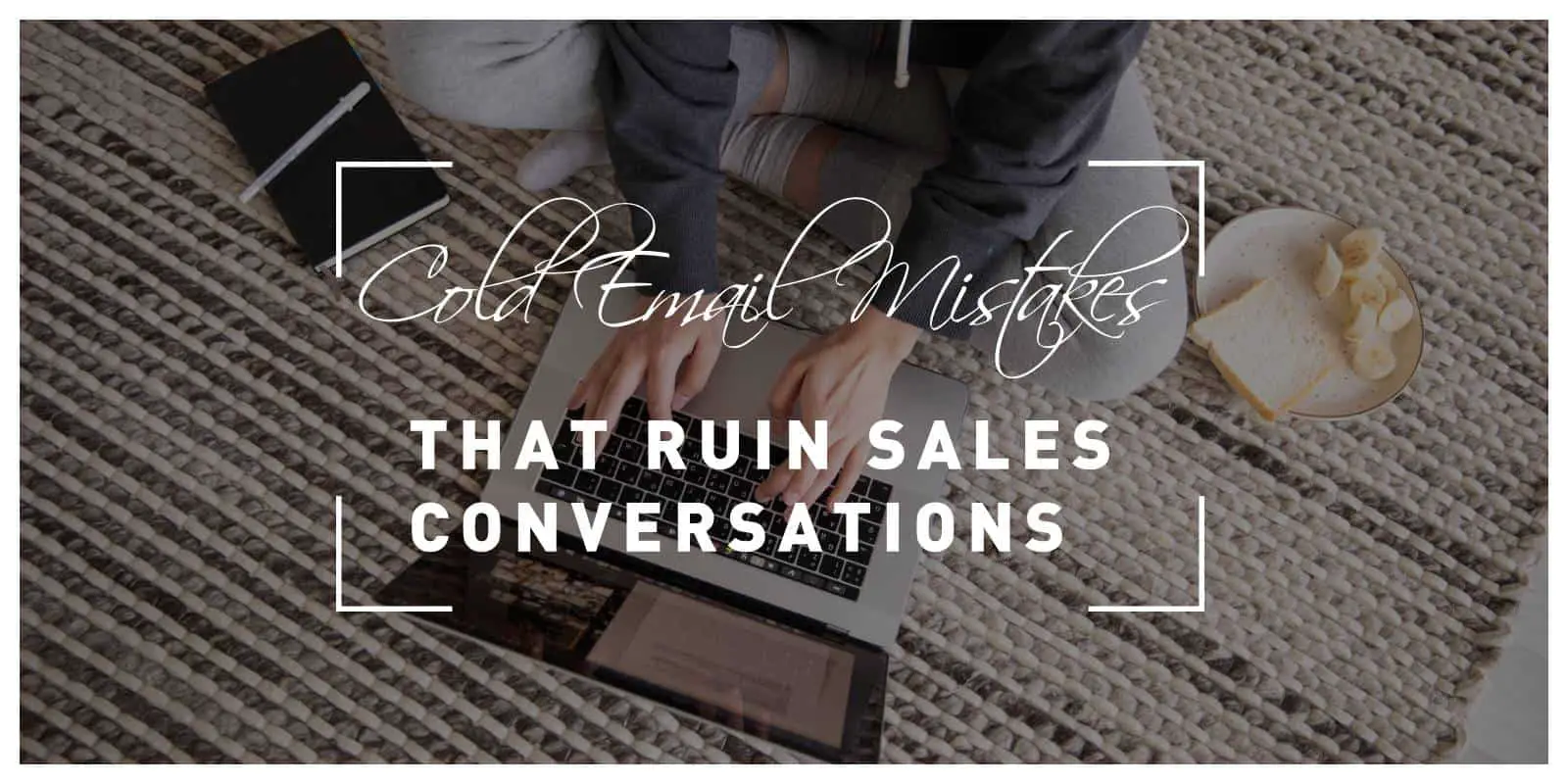At first, sending unsolicited emails to potential customers or clients might be scary. These three cold email mistakes that ruin sales conversations should be avoided. It’s necessary to consider whether or not the people you want to talk to about sales will find your message interesting.
When you’re in charge of marketing a product or service, it’s easy to be tempted to come up with a single message that everyone on your mailing list will like. Instead of narrowing down your target audience and value propositions, you may choose the most general reasons someone might decide to buy your product or work with your company.
Emails that aren’t made for a specific group of people and are more general may get some responses, but they are more likely to get spam complaints and requests taken off the list than appointment requests. Don’t bother sending a generic email response because if you do, you’ll almost always talk to a leader who isn’t qualified.
As the duration passes, it will get harder to convince them that what you are selling is worth it because they don’t understand what you are selling. Also, it doesn’t take long to ruin your IP address’s reputation to the point where none of your messages will ever be delivered.
It is especially true when considering investing money or time in a new romantic relationship. Statements that are too broad don’t work because they try to cover too much. Here are three common errors people make when sending cold emails, along with suggestions for what the sender should have done instead.
Sales Pitches That Fail Because of Vague Adjectives

To start things off, here’s an email that is so vague that it’s hard to tell what it’s about: How have you been? I wanted to say hi and learn more about what Sales folk needs from their marketing software. Please let us comprehend if there is anything we can do for you. You can see why this email hasn’t had much of an effect. What kind of software for marketing does this person sell, and to whom? Putting in the work to answer them will benefit me in the long run. Making use of a cold email tool can significantly improve the effectiveness of your email outreach by helping you craft more targeted and impactful messages.
Instead, the author might have focused on one benefit that stands out as especially clear and compelling. Suppose she is selling a marketing analytics solution. In that case, one use could be “spend less time manually crunching numbers in Excel” or “manage your quarterly budgets twice as fast.” You can’t get someone to act in a certain way without giving them both of these things.
Long, Dull Feature Lists Repel Sales Prospects
In the world we live in now, feature lists are one of the least interesting things you’ll see every day. It’s the same as randomly shooting arrows at a target, hoping one of them will hit it and get a resounding “Yes!” “I’ve been looking for something like that,” he said. The fact that they don’t use bullet points is good, but WOW.
All of this information is too much to take in at once. Focus on one success story instead of giving a long list of clients and things that can be done. Customer testimonials should be saved for your landing page, which shouldn’t have more than two or three lines of text.
It Costs Money to Send too Few Follow-up Emails

When it comes to email marketing campaigns, we’ve found that sending eight emails at once is the best way to go. As a follow-up, it shouldn’t be too hard to send seven emails, should it? “Hey, I’m just following up. Check out my latest message, and when would be a good time to talk?” You won’t acquire the desired results if you keep acting like this. If you send many emails about the same subject with the subject line “just following up,” your messages are more likely to be marked as spam.
You’re just standing there and bugging your prospect to get back to you, which does nothing good for their life. Every follow-up email you send should include a unique benefit or piece of information from you. You can’t show everyone on your list the same benefits and make sure everyone is happy. Even though your audience will have different priorities and pain points, you still have eight emails to see what they respond to.
It is because people’s preferences and situations will change throughout the study. The best method is to plan your campaign in an outline before you start writing. Email 1 may not get as many replies as other emails, but when it does, the deals that go through often happen very quickly. You will never know unless you run a test campaign and look at the results. Because of this, the best way to get in touch with as many people on your contact list as possible is to send emails focusing on different benefits, ideas, or pain points.
Conclusion
Check out our guide about three cold email mistakes that ruin sales conversations if you want to learn more about how to add specific and appealing benefits to your hard email templates.
We were able to teach people to send cold emails, which led to millions of dollars in sales for our clients, in just 10 sessions instead of thousands of hours. It made the training more efficient.

